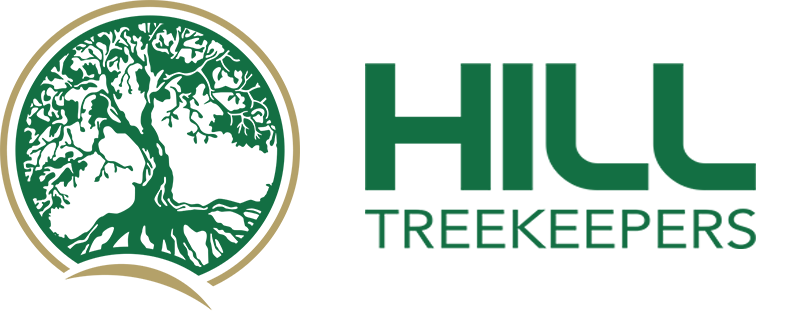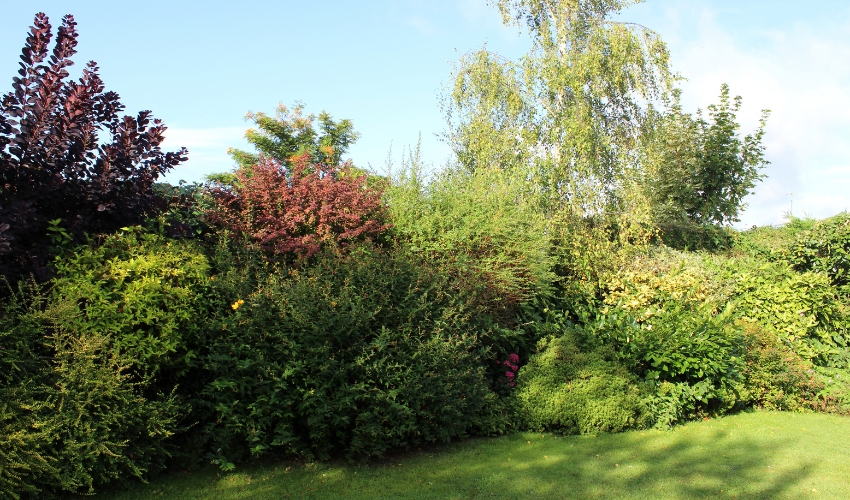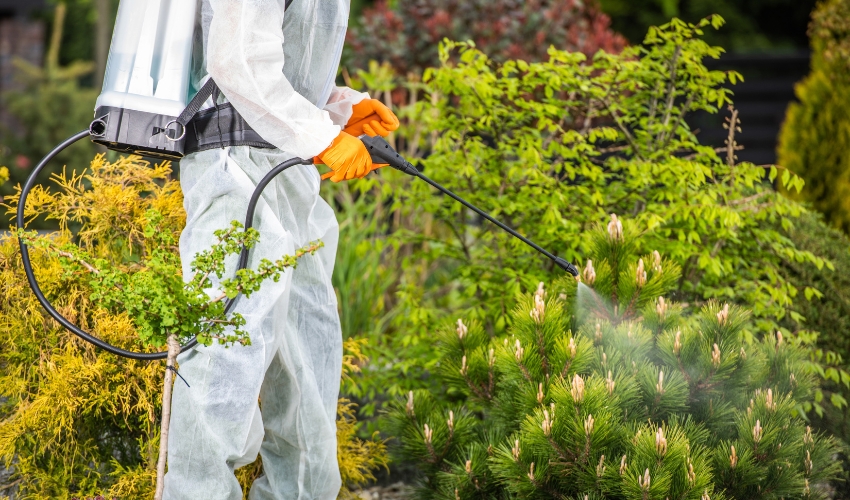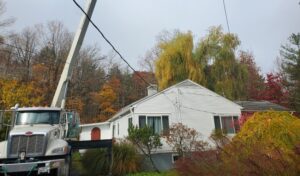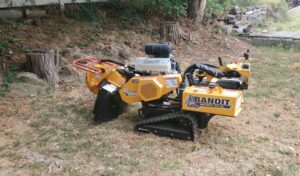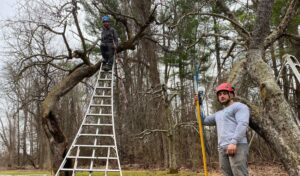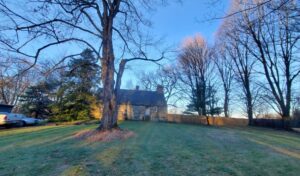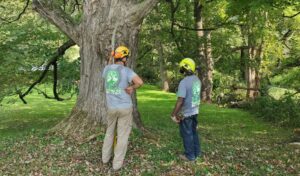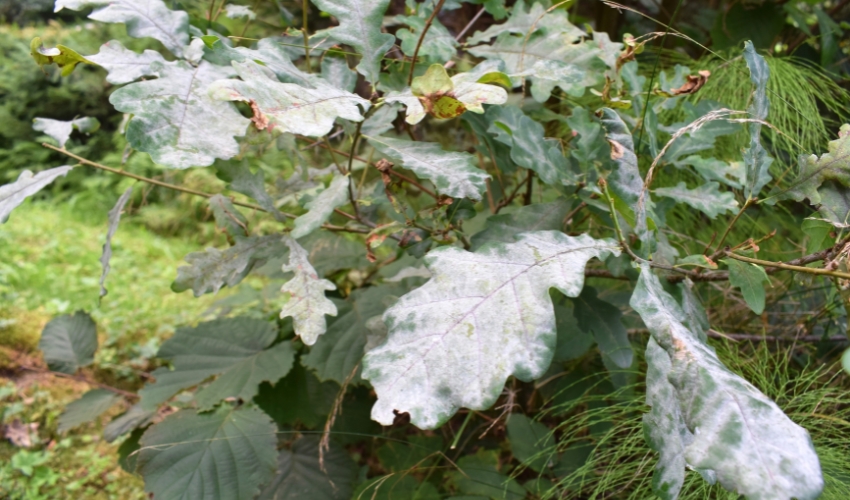
Have you ever taken a walk around your yard and noticed what looked like a white powder on your tree’s leaves? You may even try to rub it off to no avail. This isn’t a situation where someone spilled talcum powder on your plants – you’re dealing with an infection from powdery mildew.
Powdery mildew is one of the most common diseases affecting plants in the Hudson Valley area of New York. In this article, we’ll examine the disease in detail, including its causes, what you can do to prevent it, and treatment options when you have an outbreak.
Key Takeaways
- Powdery mildew appears as a white, powdery substance on the leaves, stems, and buds of many popular ornamental trees and shrubs.
- High humidity levels, lack of sunlight, and overcrowding create a favorable environment for powdery mildew.
- Proper air circulation, plant spacing, regular pruning, and monitoring can help prevent and manage powdery mildew.
- Consult with a professional who can implement preventive measures and apply effective treatments if your trees or shrubs frequently suffer from powdery mildew.
Powdery Mildew in the Hudson Valley, NY
Contrary to popular belief, powdery mildew is not a singular disease but several similar diseases that fall under one umbrella. While the diseases do have slight differences, arborists tend to lump them together in the category of powdery mildew for simplicity and because treatment options typically look the same.
Powdery mildews are plant pathogenic fungi that need a live host to survive and reproduce. For the fungi causing powdery mildew, this live host is your trees or shrubs. In the Hudson Valley, powdery mildew affects a variety of trees and shrubs, from ornamentals to shade trees.
Powdery mildew does not cause direct physical damage to the infested plant but instead siphons nutrients from the leaves to survive. However, this siphoning of nutrients can lead to damage, as a tree dealing with a heavy infestation may have difficulty getting the nutrients tit needs to thrive.
The disease does not typically kill plants except in extreme cases; most of its damage is aesthetic.
How It Spreads
Powdery mildew spreads from spores the fungus produces. The disease can be easily transmitted through wind, water, or insects that carry these spores to other plants to continue the spread of infection. In general, each species of fungus has a limited scope of plants it can affect.
Symptoms of Powdery Mildew on Trees & Shrubs
Unlike some tree diseases, powdery mildew usually has obvious signs that alert homeowners to its presence.
Powdery mildew produces the characteristic symptom of white or gray patches on leaves, typically notice these white patches on the lower leaves of trees and shrubs. The affected areas may also develop a grayish or yellowish tint over time.
As the disease spreads, it can lead to twisted, distorted, wilted, and dead leaves.
One of the first signs of powdery mildew is the appearance of small, raised bumps on the leaves. These bumps can quickly spread and cover the entire surface, giving the leaves a distorted and wrinkled look.
As the disease progresses, the white powdery substance becomes more apparent, resembling a fine dust. In severe cases, the leaves may turn brown and fall off prematurely.
Another telltale sign of powdery mildew is the presence of black specks on the affected leaves. These specks are actually the fungal spores, which can easily spread to nearby plants and cause further infection.
It’s important to act quickly if you notice any of these symptoms, as powdery mildew can weaken the affected plants and inhibit their growth and blooming.
Environmental Factors Contributing to the Spread of Powdery Mildew
Powdery mildew spreads most readily in specific environmental conditions, including:
- High humidity: High humidity levels provide the perfect breeding ground for powdery mildew. The more humid the weather, the faster it reproduces and spreads.
- Warm temperature: Powdery mildew is a bit like Goldilocks in that it prefers moderate temperatures ranging between 60°F and 80°F. These conditions are common in the Hudson Valley region, especially during spring and summer.
- Shade: Lack of sunlight and shady areas create a damp environment that powdery mildew thrives in. It is more likely to occur on shrubs in shaded spots and understory trees growing beneath larger shade trees.
- Overcrowding: When shrubs are planted too closely together, air circulation becomes limited. This lack of airflow creates an ideal environment for powdery mildew to spread.
- Poor air circulation: Stagnant air prevents the drying of lilac leaves, making them more susceptible to powdery mildew. Avoid planting in areas with little to no air movement.
Homeowners with greenhouses will want to keep a special eye out for signs of powdery mildew. The fungi thrive in greenhouse conditions where humidity is often higher than normal. Adjusting the ventilation in your greenhouse can help alleviate high humidity conditions.
How to Prevent Powdery Mildew in the Hudson Valley, New York
While powdery mildew is not often life-threatening to plants, shrubs, and trees, you should take precautions to prevent it. Powdery mildew will harm your plants and leave them looking unappealing.
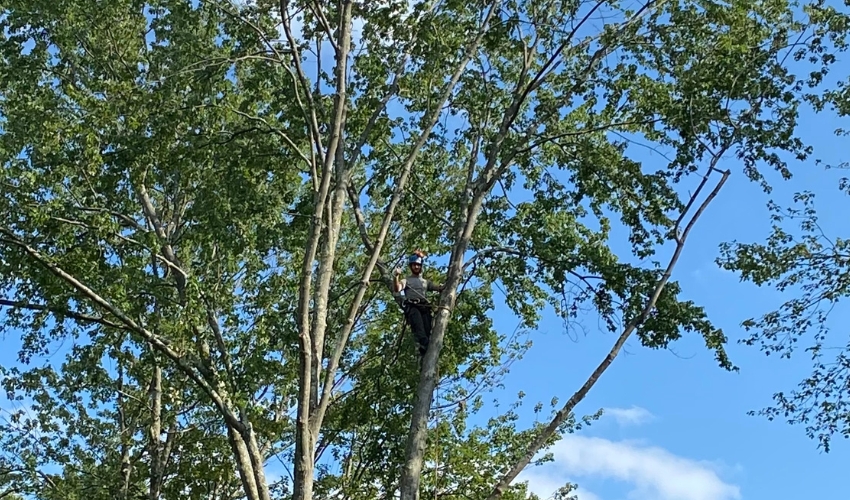
Proper pruning can improve airflow and reduce the risk of powdery mildew development.
Prune Plants Regularly
Proper pruning and trimming helps to remove infected plant parts and allows for better airflow through the foliage. Make sure to dispose of the pruned material properly to prevent the disease from spreading.
Remove Dead Foliage & Debris
Dead or dying leaves and twigs that fall to the ground can become a breeding ground for disease-causing fungi. Remove dying leaves from the plant and any infected debris on the ground to reduce the chance of the disease spreading.
Choose Powdery Mildew Resistant Cultivars
Some trees and shrubs are more resistant to powdery mildew, while others are particularly susceptible to the disease. For example, powdery mildew affects all fruit trees in the Hudson Valley, but Bartlett, Flemish Beauty, and Winter Nelis pear trees are more resistant to powdery mildew than others. Crabapples, oaks, lilacs, and hydrangeas are examples of trees and shrubs that are most vulnerable to infection.
An arborist can help you pick out disease-resistant cultivars of popular trees and shrubs to help limit the spread of powdery mildew on your property.
Avoid Over-Fertilization That Encourages Powdery Mildew
Proper fertilization can be helpful for trees and shrubs growing in suboptimal conditions. However, over-fertilization, particularly with high levels of nitrogen, encourages excess new growth that is more susceptible to powdery mildew and can increase its spread in your yard.
Avoid fertilizing plants in the late summer and throughout the fall when environmental conditions in the Hudson Valley are more favorable for spreading the disease.
Water Carefully to Keep Them Trees & Shrubs Free of Powdery Mildew
If you need to provide supplemental water to your trees or shrubs, ensure you give them the proper amount of water. Over-watered plants will encourage powdery mildew growth and enable it to spread more easily.
Avoid overhead watering (for example, don’t let your irrigation system spray plants that are prone to powdery mildew), as this can create a damp environment that is ideal for powdery mildew growth. Instead, water at the base of the plants or use a soaker hose to deliver water directly to the roots.
Treatment Methods for Powdery Mildew
Treatments for powdery mildew typically fall into the category of natural methods for mild cases and Integrated Pest Management (IPM) to deal with more advanced instances of powdery mildew.
Natural Methods to Treat Powdery Mildew
Natural methods include using products like neem oil, horticultural oil, or baking soda. These methods are typically more feasible for shrubs rather than trees because they must be sprayed on all plant surfaces. Prepare plants by watering well 2 days prior to any treatment. Avoid spraying in direct sun and test your mixture on a small area first to check for reactions. Reapply the spray weekly or after rainfall.
- Baking soda spray – Mix 1 tablespoon baking soda, 1/2 teaspoon liquid non-detergent soap, and 1 gallon of water in a spray bottle. Thoroughly coat affected plants, including undersides of leaves and stems. While effective, excessive application can burn foliage.
- Neem oil – Neem oil, an organic fungicide, won’t cure existing powdery mildew but helps prevent further spore germination and penetration into leaf tissue when sprayed to cover all parts of the plant.
- Organic fungicides – Fungicides cannot reverse powdery mildew damage but can eliminate pathogens causing the disease’s spread and are best used as a preventative.
Integrated Pest Management Strategies Can Control Powdery Mildew
Integrated Pest Management (IPM) is a comprehensive approach to dealing with tree diseases and pests. By combining cultural, biological, and chemical controls for diseases, IPM seeks to provide long-term health benefits for your plants.
Biological controls for powdery mildew include introducing species that limit the spread of the disease, such as predatory fungi that attack and kill the powdery -mildew-causing fungus. Alternatively, ladybugs and lacewings may also help with controlling the spread of powdery mildew.
An IPM plan will use fungicides as a last resort, and your arborist will typically only recommend them when cultural or biological controls are ineffective. Your arborist will choose a fungicide that will best control the powdery mildew fungi without damaging plants.
When to Call for Professional Help with Powdery Mildew
If you’ve noticed the signs of powdery mildew on your trees or shrubs, talk with an arborist about the next steps. For mild cases, they may suggest that you do nothing major, as the infection hasn’t spread far. The arborist will likely urge you to use simple methods for preventing further powdery mildew spread or improving the health of your plants.
An arborist may recommend more advanced methods of controlling the spread in more advanced cases, or when the disease has been a persistent problem. This typically involves creating an IPM program to limit the further spread of powdery mildew and get your yard back to its perfect health.
Some signs it is time to seek professional help with a powdery mildew infection include:
- Persistent infections: If you notice your plants are infected with powdery mildew every year, it may be a sign the problem is too big to deal with on your own.
- Attacks on valuable plants: We all have certain trees or shrubs on our property that we value highly for their beauty or monetary value. These may be fruit trees or mature long-standing trees like oaks. When your favorite plants are under attack, you’ll want fast, professional action.
- No treatment method has worked: We’ve outlined several cultural and biological options to control powdery mildew. But, if nothing seems to work, it may be time to let a professional handle the case.
Hill Treekeepers Can Help with Powdery Mildew in the Hudson Valley
While powdery mildew is not typically a life-threatening disease for your trees and shrubs, it will at least cause aesthetic problems. And, in more severe cases, it can kill leaves and leave you with shabby-looking shrubs. While there are many natural methods you can use to try to limit the spread of the disease, sometimes the only way to protect your plants is with the help of a certified arborist.
The team at Hill Treekeepers has numerous ISA Certified Arborists on staff who can examine your plants, diagnose if you have a significant powdery mildew problem, determine the most appropriate treatment options, and help get your landscape looking good again.
If you are having difficulty with powdery mildew (or any other tree disease), we’d love to help. Call us at 914-584-7992 or request a quote online to schedule a free inspection with an arborist.
Share this online!
Get the highest quality of tree services for residential and commercial properties in the Hudson Valley area. We look forward to working with you!
TOPICS
Recent Articles
Don't Miss the Next Update!
Join the thousands of smart Hudson Valley residents who get the monthly newsletter from Hill Treekeepers. It's full of helpful information you won't want to miss!
"*" indicates required fields
